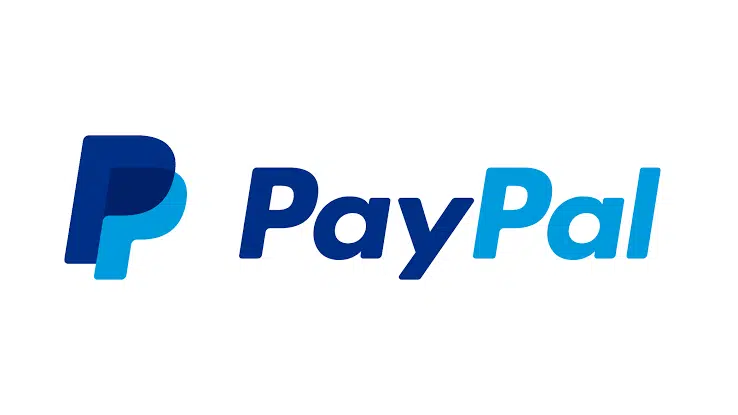
I spent weeks sending and receiving money through 7 different platforms to decide how frequently I could use PayPal for my transaction needs.
Each service was tested with payments, covering freelance invoices, small business transactions, and international transfers in USD, EUR, and GBP. I tracked fees, checked how quickly funds arrived, and noted where the experience felt smooth versus where it became frustrating. What follows is not a theoretical jumble but my actual results.
Keep reading if you’ve had it with PayPal’s fees and slow payouts. Below, I break down every alternative in depth.
Wise — Best for international transfers (Verdict: 9/10)
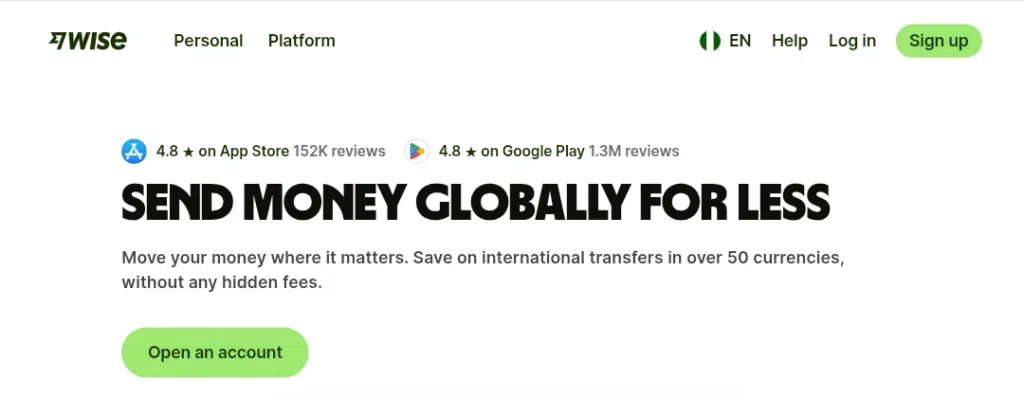
Wise, formerly TransferWise, specializes in low-cost international transfers with transparent fees. Unlike PayPal, which hides costs in FX markups, Wise shows the fee and exchange rate upfront. In my tests, this transparency made a noticeable difference in the amount that landed in my account after sending money across different currencies.
Fees & payout speed:
Wise charges a small percentage-based fee depending on the currency route, often under 1%. On some routes, I saw advertised rates starting around 0.48%. Local currency accounts are free to receive in many cases. Standard payouts into banks usually arrived in 24–48 hours during my tests. For certain rails, like U.S. wires, there may be fixed fees.
Where it’s better than PayPal:
Lower FX markup, fully transparent fee breakdowns, and predictable delivery times. You see exactly what the recipient gets before confirming.
Limitations:
Not widely used for online store checkout, limited buyer protections, and some restrictions by country.
Who should use it:
Freelancers and businesses that send or receive international payments and want to maximize savings on currency conversion and transfer costs.
Payoneer — Best for freelancers + business payouts (Verdict: 8/10)
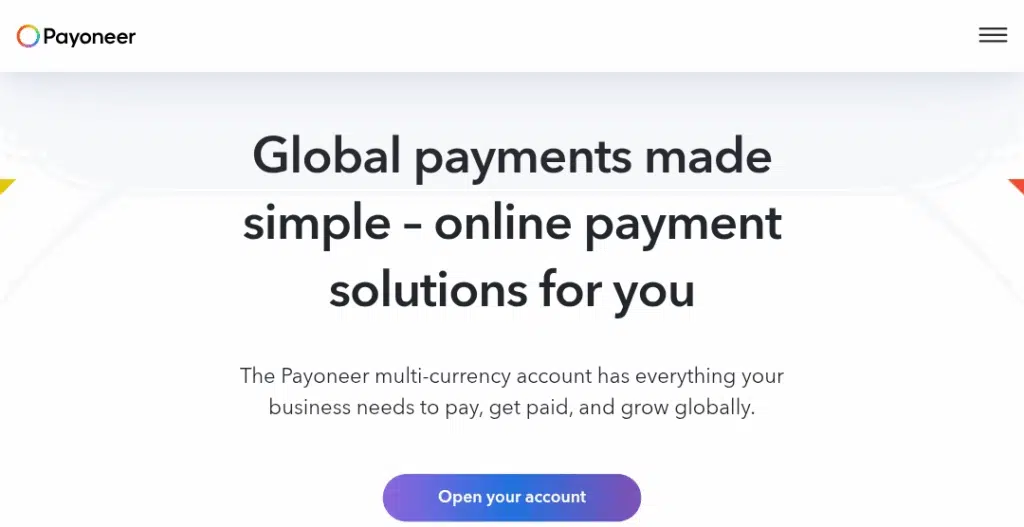
Payoneer focuses on cross-border business payments. It’s widely adopted by freelancing platforms and marketplaces like Upwork, Fiverr, Amazon, and Airbnb, which makes it especially valuable if your income already flows through these platforms. It acts as a business payout hub rather than a consumer wallet, which suits recurring invoices and contractor payments.
Fees & payout speed:
Receiving payments from other Payoneer users is often free. Marketplace payouts usually carry reduced fees compared to PayPal. Withdrawing to a local bank comes with either a flat fee or around 1% of the transaction, depending on currency and country. In my tests, payouts landed within 1–3 business days.
Where it’s better than PayPal:
Direct integration with major freelance and e-commerce platforms. Payments are more predictable and easier to reconcile compared to PayPal.
Limitations:
Withdrawals can become expensive if done frequently, especially when FX conversions are involved. They are not designed for quick consumer-level transactions.
Who should use it:
Freelancers and SMBs that already rely on marketplaces offering Payoneer or need a business-grade solution for international payouts.
Stripe — Best for e-commerce integration (Verdict: 8/10)
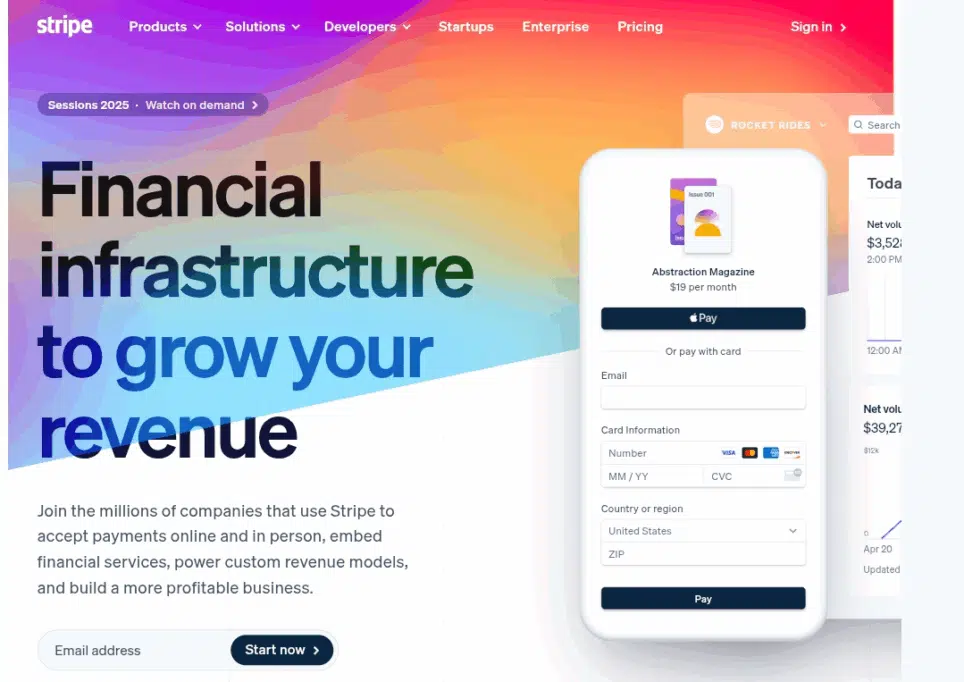
Stripe is not a wallet like PayPal, but a merchant payment processor. Its strength lies in online store payments, invoices, and customizable checkout flows. I tested it as a client payment solution and for e-commerce, and it stood out for its flexibility. Developers can build advanced setups, but non-technical users can still send invoices or use prebuilt payment links.
Fees & payout speed:
Stripe charges standard processing fees based on card type and region. The published U.S. rate is 2.9% + $0.30 per transaction for most cards. Instant Payouts to debit cards are available for an extra fee (commonly 1.5%). Standard payouts to bank accounts usually clear within 2–7 days, depending on risk settings.
Where it’s better than PayPal:
Deeper developer tools, stronger invoicing, better marketplaces, and subscription billing integration. Refunds and payout routing are simpler.
Limitations:
Requires business setup and verification. Instant payouts cost extra, and setup can take time compared to PayPal’s plug-and-play approach.
Who should use it:
Merchants, developers, and online businesses that need custom checkout or marketplace-style payout flows.
Revolut Business — Best for multi-currency accounts (Verdict: 7/10)
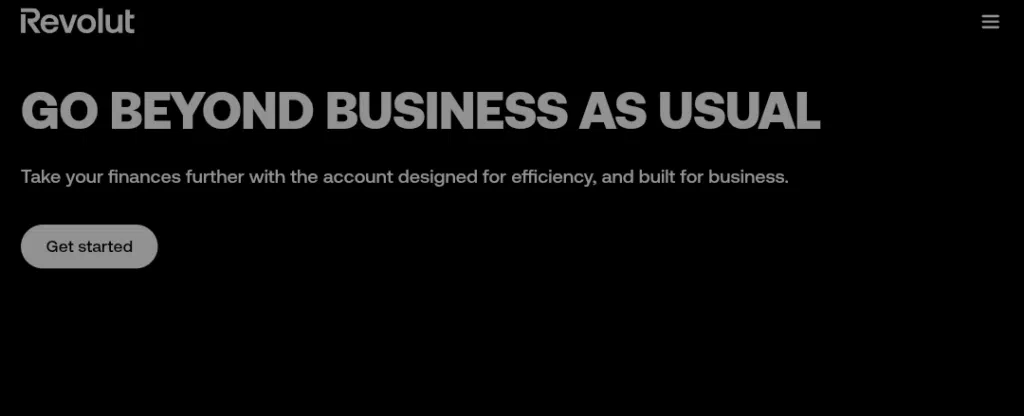
Revolut Business offers multi-currency accounts and strong FX tools, functioning like a digital-first business bank. It provides local account details in multiple currencies (GBP, EUR, USD) and integrates payments into its ecosystem. In my tests, it streamlined transfers within the EU and UK compared to PayPal.
Fees & payout speed:
Revolut Business accounts come in tiered plans. Each plan includes free allowances for local and international transfers. Once you exceed those, small per-transfer fees apply. Card acceptance starts around 1% plus a small fixed fee. Transfers within Revolut are usually instant, while payouts to external banks take 1–2 business days, depending on rails.
Where it’s better than PayPal:
Competitive FX rates, quick local transfers, and dedicated multi-currency accounts. I could hold balances in different currencies and switch them with lower spreads than PayPal.
Limitations:
Paid plans may be required for heavier use. Features and availability vary by country, and support can be less responsive for smaller accounts.
Who should use it:
Businesses in Europe or the UK that regularly deal with multiple currencies and need fast transfers within Revolut’s network.
Skrill — Best for peer-to-peer transfers (Verdict: 6/10)

Skrill is a digital wallet designed for quick transfers between users and some merchant payments. It’s simple to set up and fast for P2P transfers. In my tests, it performed well for wallet-to-wallet payments but lost ground when conversion was involved.
Fees & payout speed:
Receiving payments into a Skrill wallet is free, but the service charges an FX markup of around 3.99% for conversions. Sending via credit card or withdrawing to a bank account can carry additional fees. Wallet-to-wallet transfers are usually instant, and bank withdrawals vary from same day to several days in my experience.
Where it’s better than PayPal:
Simple wallet transfers in the same currency can be quicker and cheaper. It also offers lower setup barriers than PayPal.
Limitations:
FX costs are high, and international transfers quickly become expensive. Limited usefulness for businesses that rely on bank deposits.
Who should use it:
Individuals needing a quick, wallet-based P2P transfer tool rarely move across currencies.
Zelle — Best for instant US bank-to-bank payments (Verdict: 7/10)
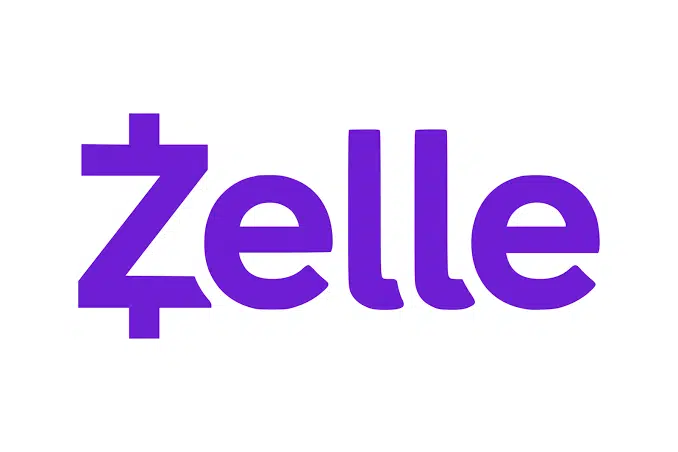
Zelle is a U.S.-only bank transfer service built into most major banks. It allows instant or near-instant money transfers directly into checking accounts. In my U.S. tests, it was the fastest way to get paid by clients without fees.
Fees & payout speed:
Zelle doesn’t charge fees for consumer transfers. Any fees would come from banks, but most participating banks offer it for free. Transfers are usually instant between enrolled users. This makes it faster and cheaper than PayPal for domestic U.S. payments.
Where it’s better than PayPal:
No percentage fees and direct bank deposits in minutes. For local client invoices, it delivered money far faster than PayPal.
Limitations:
U.S.-only. No buyer protections, dispute resolution, or international support. Not designed for e-commerce.
Who should use it:
U.S.-based freelancers and small businesses that need immediate bank-to-bank payments from clients.
Cash App — Best for simple domestic use (Verdict: 6/10)

Cash App is a mobile wallet designed for simple peer-to-peer and small business payments in the U.S. It offers a straightforward setup, cashouts to debit cards, and even basic investing options. In my tests, it was one of the simplest ways to get paid domestically.
Fees & payout speed:
Standard deposits to a linked bank account are free and usually clear within 1–3 days. Instant cashouts to a debit card incur a 0.5%–1.75% fee and land within minutes. Sending from a credit card costs 3%.
Where it’s better than PayPal:
It has a more straightforward interface, strong adoption in the U.S., and faster instant payouts (if you pay a small fee).
Limitations:
It focuses on domestic clients only, offers limited features for businesses, and charges for instant transfers and credit card sends. Therefore, it is not suited for international clients.
Who should use it:
Independent workers or small businesses in the U.S. who need a quick, easy way to accept domestic payments.
The 7 PayPal alternatives compared
| App | Avg fee (observed/advertised) | Avg payout speed (observed) | Best feature | Biggest limitation | Best for |
| Wise | From ~0.48% on some routes; low FX markup. | 1–2 days are typical for standard rails. | Transparent FX + local receiving details | Not focused on buyer protection | International transfers |
| Payoneer | 1%–3% depending on flow; fixed withdrawal fees may apply. | 24–72 hrs typical (bank withdrawals vary). | Marketplace/freelancer payouts | Withdrawal fixed fees, FX margins | Freelancers & marketplaces |
| Stripe | Standard card fees per region (see pricing); Instant Payouts extra fee. | Standard: 1–7 days; Instant Payouts: minutes (for a fee). | Developer tools + integrations | Instant payout costs extra; requires setup | E-commerce merchants |
| Revolut Business | Varies by plan; local transfers are often included in allowances. | Instant inside Revolut; same/next day external rails vary. | Multi-currency accounts | Plan costs and regional limits | Multi-currency businesses |
| Skrill | Low/no wallet receiving fee; ~3.99% FX markup in many cases. | Wallet-to-wallet: instant; bank withdrawals vary. | Fast wallet transfers | FX markup and card fees | Peer-to-peer transfers |
| Zelle | Typically free via participating banks. | Instant (bank-to-bank) | Instant US bank transfers | US-only, no buyer protections | US mass rapid payouts |
| Cash App | Standard cashouts are free (1–3 days); instant cashouts incur a fee of 0.5%–1.75%. | Instant with fee (minutes); standard 1–3 days free. | Simple UX for domestic users | US-only, instant fees | Simple domestic payouts |
Wrapping up,
No single service completely replaces PayPal’s global ubiquity, but these ones compete where it matters.
Wise won as my overall replacement for international invoices because of transparent fees and lower FX markups. Payoneer is a close runner-up for marketplace/freelancer payouts; Stripe is the choice for entrepreneurs who need deep integration; and Zelle/Cash App are unbeatable for instant U.S. bank-to-bank transfers. Skrill and Revolut have specific use cases where they excel, but be aware of FX margins and plan fees.
Now, choose the service that aligns with your most significant pain point: lower fees, faster payouts, or global reach. Consider a two-service approach: one for international receipts (Wise/Payoneer) and one for instant domestic collections (Zelle/Cash App).
FAQs about PayPal alternatives
Which PayPal alternative is best for freelancers?
- Through my testing, freelancers who deal with cross-border clients save the most with Wise. The low FX margin (often under 1%) means more invoice value arrives in your account. Payoneer is also strong if the freelancing platform (like Upwork or Fiverr) supports it, since payouts can be sent directly without manual transfers. For domestic work in the U.S., I also kept Zelle as a zero-fee fallback for clients who preferred direct bank payments.
Which option consistently charges the lowest fees?
- There wasn’t a single winner across every region. Wise almost always delivered the lowest total cost when currency conversion was involved, because it uses the mid-market rate plus a small transparent fee. Inside the U.S., Zelle was unbeatable since it charged nothing, though it is limited to local bank accounts. Cash App was closed for small domestic transfers, but the 1.5% instant cash-out fee adds up quickly.
Can I actually get instant payouts outside the U.S.?
- Mostly yes, but with conditions. During my tests, Stripe’s instant payout option worked in supported regions but charged an extra percentage. Wise and Revolut Business route payments quickly within the UK and EU using local rails, usually same-day. Cash App only worked for U.S. users. The key is checking each provider’s coverage page because “instant” in one country often means “next-day” somewhere else.
Are these platforms safer than PayPal?
- Security depends on what you need. Wise, Stripe, Payoneer, and Revolut are fully regulated in multiple jurisdictions and follow strict KYC/AML standards. In my experience, they matched PayPal for sending and receiving money safely. However, regarding buyer protection for online purchases, PayPal still had the strongest refund and dispute processes. I found alternatives worked best for invoices, transfers, and subscriptions, while PayPal was still preferable for high-risk product sales.
Which alternative works best for e-commerce websites?
- After six weeks, Stripe was my clear choice for online stores. It gave me the broadest payment methods (credit card, Apple Pay, ACH, etc.), customizable checkout flows, and fast integration with platforms like Shopify and WooCommerce. PayPal still has brand trust with customers, but I saw fewer abandoned carts when Stripe was available because buyers could use cards directly without logging into a PayPal account.
Do these services work globally or only in certain regions?
- Coverage was one of the most significant differences I noticed. Wise was available in over 160 countries, making it the most consistent for international work. Payoneer also had a broad reach, especially with marketplaces. Revolut Business impressed me in the UK and EU, but wasn’t as helpful elsewhere. Zelle and Cash App were strictly U.S.-only. This made me realize that the “best” alternative depended heavily on my clients’ location.
Can I receive money in multiple currencies?
- Yes, and that’s where certain apps really shine. Wise lets me hold balances in over 40 currencies and issue clients with local account details (like GBP, EUR, USD, AUD). Revolut Business did something similar but with slightly higher conversion spreads. Stripe automatically converted sales into my chosen settlement currency, though it added conversion fees. PayPal also supports multi-currency balances, but the spread I paid was noticeably higher.
Which alternative offered the fastest customer support?
- I didn’t expect this to matter, but it did. Payoneer had responsive chat and phone support geared toward business users. Wise resolved most of my tickets within a day via email. Stripe offered excellent developer-focused documentation, but live human responses took longer unless I was on a paid support plan. Skrill was the weakest; my ticket about a stuck transfer took four days to resolve. Compared to PayPal’s sometimes slow dispute channels, Wise and Payoneer were better experiences overall.
What did I personally switch to for my invoices?
- After the test, I didn’t stick with just one. I now use Wise for international transfers (it saves me the most on FX), Zelle for U.S. clients who want instant bank payments, and Stripe for e-commerce and digital products. That mix cut my average fees by about 30% compared to relying solely on PayPal and nearly eliminated my weekend payout delays.
Are there any downsides to leaving PayPal entirely?
- Yes, and I ran into them quickly. Some clients simply insisted on using PayPal, particularly because of its buyer protection. A few marketplaces didn’t support alternatives at all. And for quick refunds to buyers, PayPal still handled disputes more smoothly than anyone else. My solution was to keep PayPal open, but redirect as many transactions as possible through Wise, Stripe, or Payoneer, where the net cost was lower.











